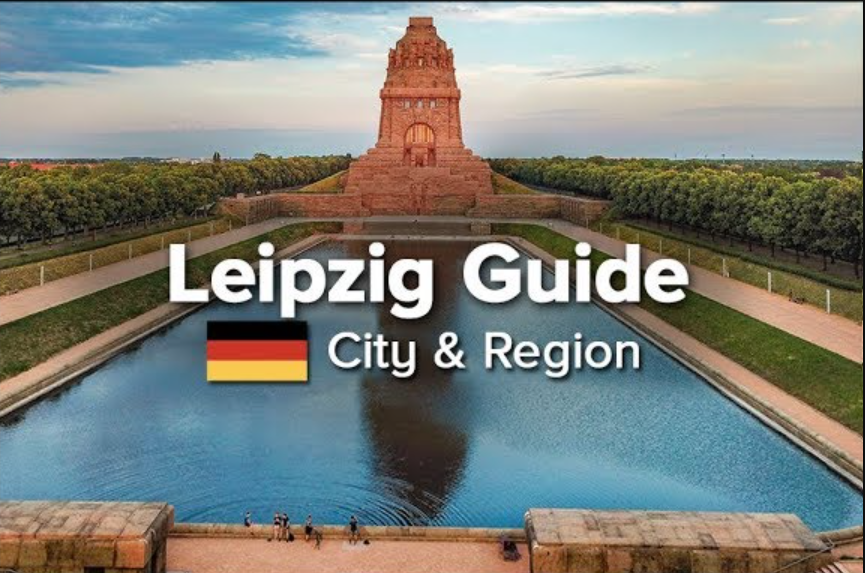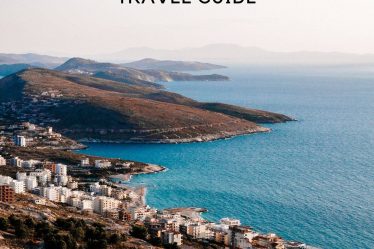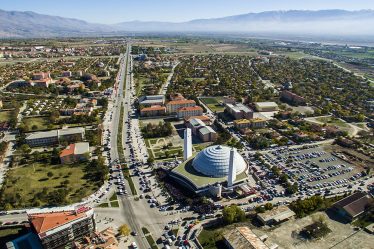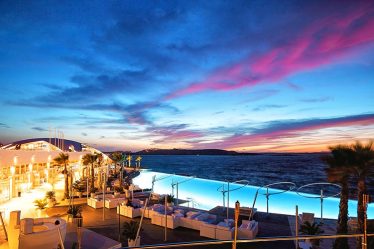
Leipzig , which stands out with its rich history and magnificent architectural tradition, is one of the most important tourism destinations in Germany. The city, which has been the science, culture and art center of the country since ancient times, is described as ‘Little Paris’ in Goethe’s Faust.
With its clean, narrow and winding streets, cafes and patisseries that welcome people with their wonderful scents at almost every corner, the city reminded me of Vienna more than Paris. However, it is quite small in comparison. With Dresden just 100km away, Leipzig can be a great weekend destination.

In the city of Leipzig, which is known for culture, education and art in Europe , there are streets where young university students add dynamism, cafes with different designs, churches with traces of gothic architecture and the opportunity to witness the lives of important names of the music world.
Despite his small age, it is evident from all sides that he was kneaded with art by the world-famous Bach, Schubert, Mendelssohn, Martin Luther, Goether, Schiller and the fantastic Neue-Leipziger-Schule art movements. I loved Leipzig, the city of poetry, art and music.
Leipzig Travel Guide
Leipzig Attractions
- Leipzig Markt
- Hauptbahnhof Leipzig
- Auerbachs Keller
- Leipzig University Tower
- Battle of the Nations Memorial
- St. Nicholas Church
- St. Thomas Church
- Zoom Arabischen Coffe Baum
- Bach House
- Gewandhaus Leipzig
- Grassimuseum
- Museum der bildenden Künste
- Other Leipzig Museums
- Colditz
- Leipzig Zoo
Leipzig Travel Guide
Leipzig is the largest city in the German state of Saxony. The city in the northwest of the state of Saxony, known for its fairs, universities, books, culture and art, is also known as the hero of the music and peace revolution. This place, which was called ‘Lipsk’ by the Slavic origins in the past, means ‘the place where the linden trees are found’.
It has been one of Germany’s most important trading cities since the time of the Holy Roman-Germanic Empire. It is one of the three big cities of the former East Germany with the mobility of its cultural and artistic life, the diversity of opportunities such as shopping, entertainment, eating and drinking.
The city, which has developed with its trade potential, has started to gain the identity of a city of literature with the intensification of cultural activities since the 16th century. Goethe’s contribution to this is quite large. Known for its world-famous music composers, Leipzig is one of Germany’s cultural capitals. In the city, which is known in Europe for its printing press and bookstores, the presence of an educated population can be felt.
Leipzig, the largest settlement of Saxony Province, has a population of 500 thousand in the center and a metropolitan population of over 3.5 million. Having reached a population of 713,470 in 1933, Leipzig was influenced by the historical development processes and II. After World War II, the population was constantly lost.
After the unification of East and West Germany, the population of the city decreased to 437 thousand, especially with the migration of the young population to the west. The German government and local governments have been successful in preventing this with the measures taken.
Leipzig, whose city center was bombed during the war, took its place among the cities where Europe’s liveliest life can be seen after the restoration works. You can also see the neglected and bad-looking post-war buildings, but this only shows Leipzig’s magnificent balance between the past and the future.

This city, which is also the birthplace of the famous pianist and choir director Richard Wagner, is a place where the heart of art beats with its deep-rooted musical history, theater and opera. No other city in Europe has such a great musical tradition. Johann Sebastian Bach and Felix Mendelssohn, who worked as music directors between 1723 and 1750, are among the symbols of Leipzig.
There are many unknown ‘firsts’ about Leipzig, which is of great importance not only for Germany but for the whole of Europe. The first coffeehouse opened in Germany under the name of Arabian Coffee Tree , the world’s first medical journal publication, the first undergraduate librarian education in Germany, and the first book preservation center in Germany are just a few of them.
The first daily newspaper published in the world in a modern sense, the first traveller’s check used as a bank guarantee letter, the first orchestra in the world formed by the tradesmen came to life in this city.
The first traveller’s check, the first serialized encyclopedia, the first textbook, the first book series, the first daily newspaper published in Leipzig. With the Treaty of Versailles signed after the First World War, cases where those who committed war crimes were tried in Leipzig. I wrote about interesting aspects of the city in my blog post about Leipzig .
The Leipzig Trade Fair (Leipziger Messe), known as the mother of trade fairs in the world, is a tradition that has been going on for nearly a thousand years. This area, where European traders met in the Middle Ages, is now popular with events such as the Game Congress, the Leipzig Book Fair and the International Automobile Fair.
Leipzig Attractions
The best way to feel the art-nouveau atmosphere of Leipzig is to wander through all its streets and take a look at the side streets. It is possible to enjoy the city by spending time in the streets of Leipzig, where the smell of cake and coffee can be heard. Take 2 days to explore the city.
Leipzig has one of the largest tram networks in Germany. Apart from this service, which operates on 15 different routes, three underground metro lines and 30 bus lines provide easy access to every part of the city. In addition , it is more economical and easier to travel with a weekly Leipzig Card or family tickets.
Daily valid Leipzig Card 2015 price is 10.90€; The 3-day one is 21.90€; The card is valid for 3 days for 2 adults and up to 3 children under the age of 14 for 37.90€. When used for the first time, validation and signature is required.
One of the most important centers of German culture, Leipzig offers rich options with its well-established universities, squares bearing cultural and artistic traces, historical buildings and many places to visit. Best Western and Seaside Park Hotel, where I stayed, may be good choices for accommodation.
1. Leipzig Markt

Leipzig Markt is the old market square, one of the most beautiful and ostentatious places in the city. Part of it was completely closed with the Altes Rathaus , the town hall from the Renaissance period . The activity in and around the square, which is the meeting point of visitors as well as residents of the city, continues throughout the day.
The Stadtgeschichtliches Museum , located inside the Altes Rathaus, contains unique artifacts and documents from the past of Leipzig. The entrance is located behind the Rathaus. Efforts are constantly being made to expand the museum exhibition space. Various activities are held on the raft on the roof.
For this, announcements are made with traditional clothes and drums. www.stadtgeschichtliches-museum-leipzig.de . 6€ ; Tuesday-Sunday 10–6.
2. Hauptbahnhof Leipzig

Hauptbahnhof Leipzig is the largest train station in Europe. When I came from Dresden by train, I was very impressed with this station. There are shops and restaurants for shopping at the train station, which was built in 1915 and has 26 passenger platforms.
It is a monument that was built in 1915 and is under protection today, but the shopping section in a part of it did not get its share from this protection. The only thing missing in the whole complex is a bar.
Most of the shops and restaurants are open until 10 pm, including on Sundays. Here Ludwig Cafe Leipzig Hauptbahnhof is a delightful place to read a book with an early delicious coffee.
3. Auerbachs Keller

Auerbachs Keller is one of the most famous restaurants in both Germany and Europe. It was found in 1525. It is both peaceful and touristic, and its food is quite delicious and its presentations are exquisite. It has two different sections; Grosser Keller, where you can find healthy Saxon food, and the 4 historic rooms of the Historische Weinstuben, which has a premium fare.
The ‘Goethe Room’ here contains numerous memories of the famous poet. One of the episodes of Faust takes place in the famous Auerbachs Keller restaurant here and takes you back to those stone stairs of the restaurant. Today, pictures and documents of both Goethe and other famous visitors adorn the walls of Auerbachs Keller.
Make sure to make a reservation before you come. The passage where the restaurant is located, Mädler Passage is also quite famous. A few blocks away is Mephisto Bar with its magnificent art nouveau decor .
Mädler-Passage is one of Leipzig’s most famous passages. The two bronze figures at the entrance of Auerbachs Keller in the Neumarkt district were made by Mathieu Molitor, inspired by Goethe’s scenes in Faust. It is said that touching the feet of statues brings good luck.
4. Leipzig University Tower

Leipzig University Tower (Leipziger Universitatstrum) is located next to the Augustus square, close to the city center Markt. A building that draws attention with its 143 meters length is the tallest building in the city, it can be seen from any side.
University students called it ‘pointed teeth’ or ’20 teeth’. In fact, the tower, with its architecture reminiscent of an open book, refers to the city’s relationship with books. Located in the university, formerly named Karl Marx, the tower resembles a space campus.
Ascend to the 31st floor for a panoramic view of the entire city. When the weather is clear, you can even see the Völkerschlachtdenkmal Monument, which is located in the east of Leipzig and commemorates the historical wars of 1813. The restaurant and cafe are very romantic. You can take great Leipzig photos from here.
5th Battle of the Nations Memorial

The Leipzig War Memorial (Völkerschlachtdenkmal) was erected in 1913 to commemorate the Prussian, Austrian, Russian and Swedish soldiers who met with Napoleon’s soldiers on the ridges of Leipzig.
It carries an important message for European history. The monument, which has a great importance in the foundation of the city and in the ancient history of Germany, was built to commemorate the great defeat of Napoleon in the wars of 1813.
Located on the ridges of the city, the 150-meter-long monument has the title of the largest monument in Europe with its height. It can be climbed up to 91 meters with 500 steps. From here you can see the whole city as well as take photos.
6. St. Nicholas Church

st. Nicholas Church (Nikolaikirche) is a church dominated by Gothic architecture. It has a very strong gothic architecture. Its unusual ceiling is supported by columns that open like palm trees. Thanks to its ordinary appearance, it became the secret meeting point of the people who were organized during the suppression of the Communist regime.
Before the government collapsed, many East German citizens gathered here every Monday and sang ‘Wir sind das Volk’ (we are the people). The peace sermons that started the 1989 revolution are still being delivered at the church every Monday at 5 o’clock.
7. St. Thomas Church

st. Thomas Church (Thomaskirche) is one of the most important places in Leipzig, which is considered a good example of Gothic architecture. It was here that the great reformer Martin Luther gave his famous speech announcing the arrival of Protestantism in 1539. It is also known as the place where Bach conducted the choir for 27 years.
Bach, who wrote most of his short oratorios in this church, was transferred to the church after his long-wanted tomb was found. The church was destroyed in a bombing in 1943. There is also the famous German musician Felix Mendelssohn Monument in front of the restored church.
8. Zoom Arabischen Coffe Baum

Zum Arabischen Coffe Baum , meaning ‘Arab Coffee Tree Museum’, is the oldest coffee house in the world. You can find great information about coffee culture in Europe, especially in Saxony, in the place that was opened in 1694 and is both a cafe and a museum. He also served famous people such as Gotthold Lessing, Schumann, Goethe and Liszt.
There are many paintings, Arabian coffee ships and cafe games in the museum. In addition, this entertaining place, where the basics of coffee roasting is taught, has sections such as Vienna, French and Arabic cafes, but there is no coffee service in the Arabic section, it is used only as an exhibition. Their cakes are very good.
9. Bach House

Bosehaus (Bach-Archiv Leipzig) is the family home where Bach once lived. Musician Bach, who is the choirmaster at the famous Lutheran Church Thomaskirche, is the most important representative of the city in the field of art. The name of Johann Sebastian Bach, who lived between 1685 and 1750, is side by side with the city on every platform.
In the museum, located right across the Thomaskirche, how Bach worked, his life and works are presented in an interactive way, blended with audio narration, visual studies and of course his works. Dedicated to the composer’s career, the museum house features interactive exhibits as well as the artist’s personal belongings. I am sure that those who want to understand and get to know Bach’s music will love it.
10. Gewandhaus Leipzig

Neues Gewandhaus (New Orchestra Building) is the meeting point of art lovers in Leipzig. The building, which is the work of glass and concrete workmanship in the shadow of Leipziger Universitatstrum, has world-famous acoustics. So much so that it echoes a single tone for exactly 2 seconds. It is home to the Leipzig Philharmonic Orchestra. Former directors Kurt Masur and Michael Köhler are currently managing it.
11. Grassimuseum

The Grassimuseum , known as the museum complex in the city, is one of the best examples of German Art Deco architecture. It was restored by British architect David Chipperfield. There are three museums in the building, which was opened in 1929 and started to serve again after being restored in 2005.
Museum für Angewandte Kunst : The museum has a 2,000-year-old giant archive of traditional handicrafts such as porcelain, rugs, and modern home designs, which are the pride of Leipzig and eastern Germany. www.grassimuseum.de ; 5€, Tuesday-Sunday 10–6.
Museum für Völkerkunde : In this museum, which has works of art from all continents and many eras, the ancient artifacts from Southeast Asia, in particular, attract a lot of attention. The world’s only Kurile Ainu feather costume is also in the northeast Asia collection section. www.grassimuseum.de ; 6€. Tuesday-Sunday 10–6.
Museum für Musikinstrumente : It is a musical instruments museum that mostly belongs to the Renaissance period and has the world’s oldest harpsichord built in Italy in 1543. There are also instruments such as chibalo, flute and oud. It is possible to hear the sounds of the instruments in the exhibitions. €5, Tuesday–Sunday 10–6.
12. Museum der bildenden Künste

The Museum der bildenden Künste (Museum of Fine Arts) is one of the city’s leading art galleries, housed in a green glass cube in the middle of Sachsenplatz Square. There are more than 2,700 paintings and sculptures in the museum, which reflects the city’s artistic past and carries examples of minimalism.
All these works cover a history from the German Middle Ages to the time of the modern Neue Leipziger Schule. Artists to note in particular include Lucas Cranach the Elder and Caspar David Friedrich. Don’t miss Max Klinger’s depiction of Beethoven as a statue of Zeus. Start at the top of the museum and continue down.
There are also many art galleries in Leipzig. These include Gallery for Contemporary Art, Spinnerei, German Photography Museum, The Rundling, Museum of the Printing Arts and The White Lady.
13. Other Leipzig Museums

Leipzig, a former fishing village, is today a modern city full of museums and galleries. There are more than 50 museums throughout the city. Museum für Angewandte Kunst , where local and ethnographic products of Germany are exhibited , includes a 2,000-year-old archive of traditional handicrafts, porcelain, rugs and modern house designs.
Drawing attention with its Southeast Asian collection, Museum für Völkerkunde exhibits ancient artifacts from all continents and countries from many eras. In the Museum für Musikinstrumente , where musical instruments, mainly from the Renaissance Period, are exhibited , there are instruments such as chibalo, oud, flute and a never-ending musical sound.
Zeitgeschichtliches Forum Leipzig is Germany’s II. Fabulous history museum offering extraordinary insights into the post-World War II division and reunification.
The Stasi Museum , whose real name is Museum in der Runden Ecke, sheds light on East Germany’s communist era , was once the headquarters of the former secret police (Stasi) and now houses a chilling collection of East German times. www.runde-ecke-leipzig.de.
The German Book and Writing Museum has been in service since 1884. This historical cultural institution serving in Deutsche Bücherei affiliated to the National Library of Germany is the oldest museum in the world in its field. It has the world’s largest collection of watermarked paper. It presents its valuable collections to a wide audience with its permanent and temporary exhibitions.
Dedicated to the composer Felix Mendelssohn-Bartholdy , the Mendelssohn Haus (Mendelssohn House) is known as the house where the artist lived and lost his last days. Concerts are held every Sunday at 11 o’clock in the building, whose originality has been preserved after the restoration, which was carried out in keeping with its 19th century features.
14. Colditz

Colditz , The subject of movies and TV series, II. It is a castle that was mentioned frequently during World War II. This town, 50 km from Leipzig, turned into one of the largest castles in Germany during the war. The town, where the most dangerous criminals and prisoners of war were held, was a prison that was impossible to escape. Today, it is used as an elderly rehabilitation center.
During the war, the Germans turned this town into a giant fortress and locked up the most dangerous criminals as an escape-proof prison. The castle is currently a place where the elderly are cared for, but some places whose gardens and courtyards were built during the war are open to visitors. The town itself is also worth a visit and is an interesting place within easy reach from Leipzig.
15. Leipzig Zoo

Leipzig Zoo is one of the best zoos in Europe. Opened in 1878, this is a delightful place with more than 5 hundred plants and more than 850 animal species. It is said that the animals are taken care of in better conditions in the huge garden, which covers an area of 225 thousand square meters.
Visit Zoo Gondwanaland, the Leipzig Zoo, to see the tropical gardens of Africa, Asia and South America in the heart of Europe.
Where is Leipzig 📍
The city of Leipzig is located at the southern end of the North German Plain. Weisse Elster is located at the junction of the Pleisse and Parthe rivers. Leipzig, which is a part of the Central Saxony state, is adjacent to the city of Halle on the border of Lower Saxony.
Leipzig, which has been one of the important trade centers of the region since the Middle Ages, is 114 km from Dresden, 190 km from Berlin, 260 km from Prague and 431 km from Munich.
How to get to Leipzig 📌
Leipzig/Halle Airport is located 18 km northeast of Leipzig. The airport is the second largest busiest airport in East Germany. A train runs every 30 minutes between the airport and the city center (€4.20) and it takes an average of 15 minutes to reach the city center. Connections are given from the train station at the airport to places nearby or far away.
Buy your ticket with cash or credit card by clicking the Leipzig Hbf option from the ticket machines called Fahrkarten . Among the language options, there is also Turkish. If you have any problems, stop by the Deutsche Bahn info desk. If you’re in a hurry, go straight to the train and explain it to the conductor. But when the train tickets are checked, know that if you do not have a ticket, it will cost more.
Do not forget to validate your ticket (validation). After validating your ticket on the device near the ticket machine, the ticket is valid for 2 hours.
Those who want to reach the city by taxi from the airport should go to Terminal B/Arrival. It takes about 20 minutes to reach Leipzig city center by taxi.
I loved Leipzig’s central train station. One of the biggest and most beautiful stations in Europe. It is one of the places that can be preferred for eating and drinking.
From this wonderful station , you can go to Berlin , Dresden , Munich, Frankfurt and Hamburg. There are also direct flights from other European cities to Paris , Prague, Milan, Vienna and Zurich.
Deutsche Bahn train company provides transportation from Leipzig to many other cities. Halle (€9, 25 minutes), Magdeburg (€20, 75 minutes), Erfurt (€28, 60 minutes), Dessau (€11, 50 minutes), Potsdam (€47, 2 hours) and Berlin (€43, 80 minutes).
It is also possible to reach other cities from Leipzig by high-speed trains; Frankfurt (€72, 3.5 hours), Munich (€89, 4.5 hours), Hamburg (€93, 3 hours), Dresden (€20, 90 minutes), Berlin (€43, 80 minutes). It is possible to reach Prague (€50, 4.5 hours) from Dresden.
The mobility of cultural and commercial life, the diversity of opportunities such as shopping, entertainment, eating and drinking have made Leipzig one of the most preferred places in Germany. Leipzig , which has been one of the science, culture and art centers of the country since ancient times, is worth seeing.


